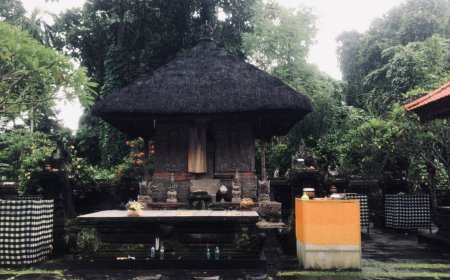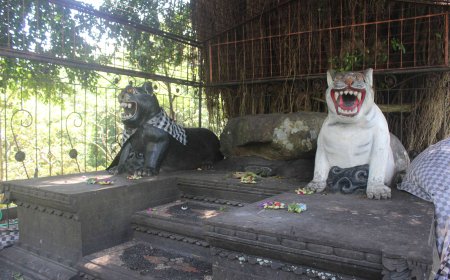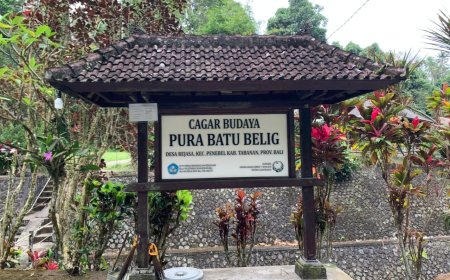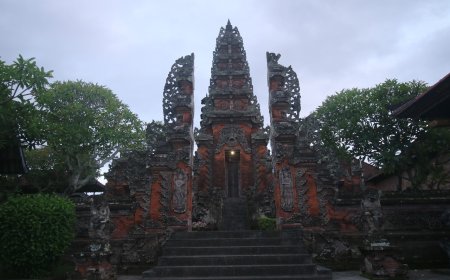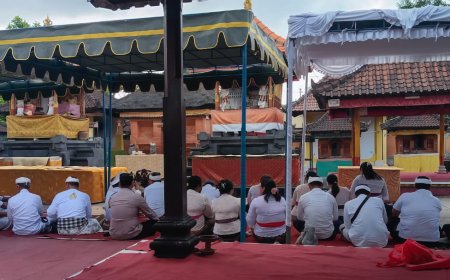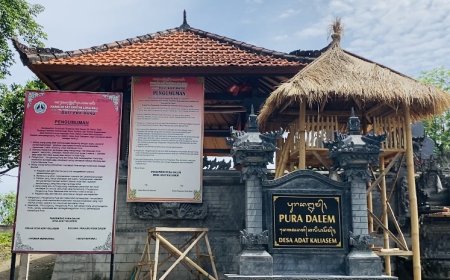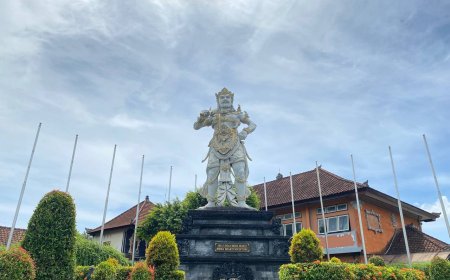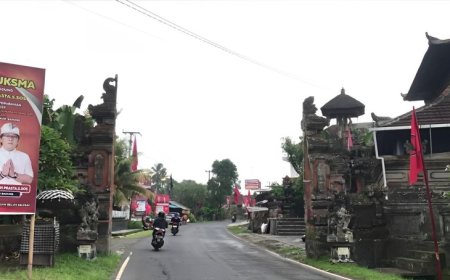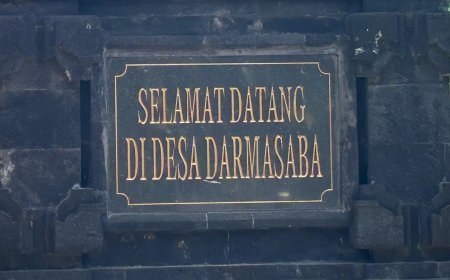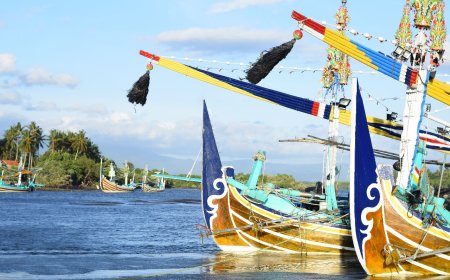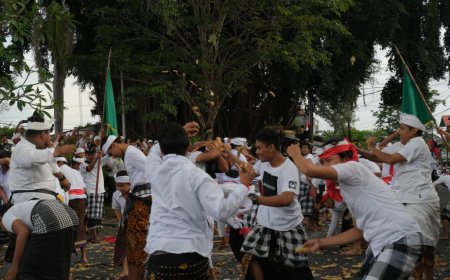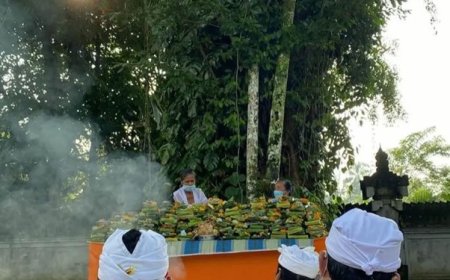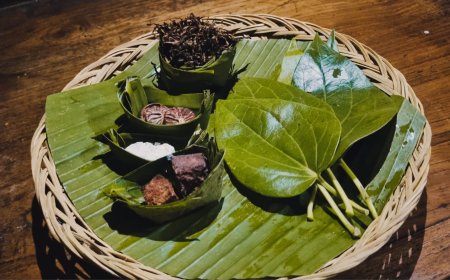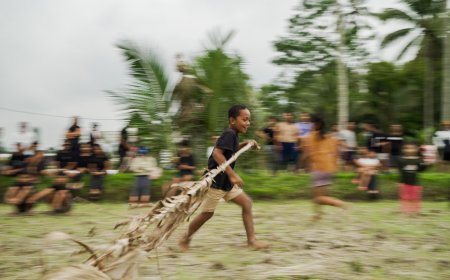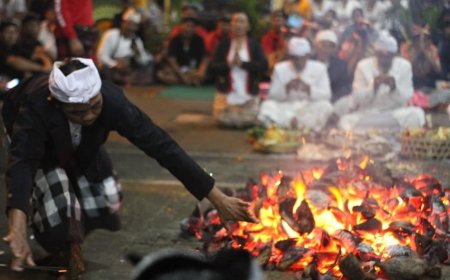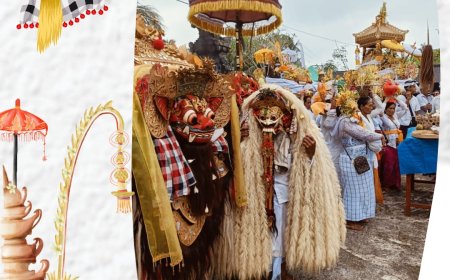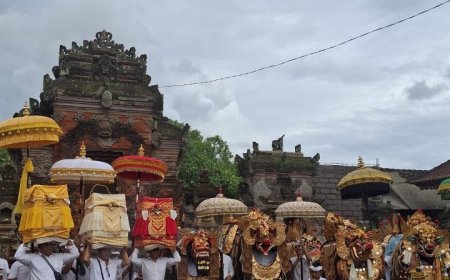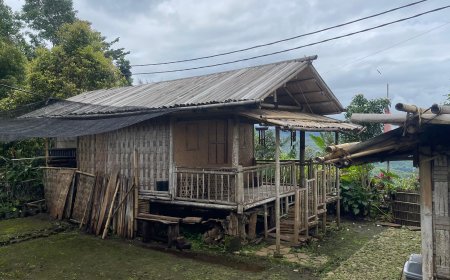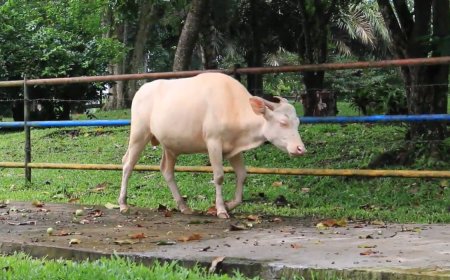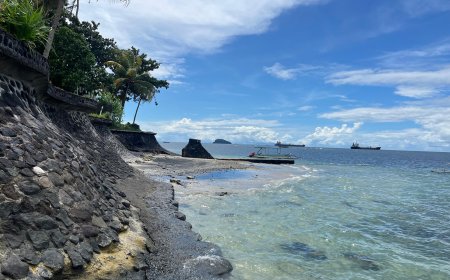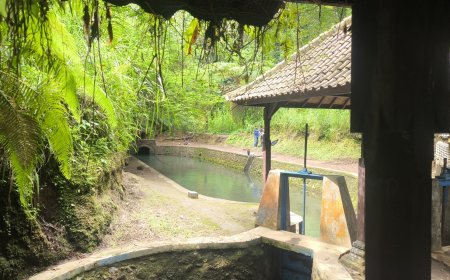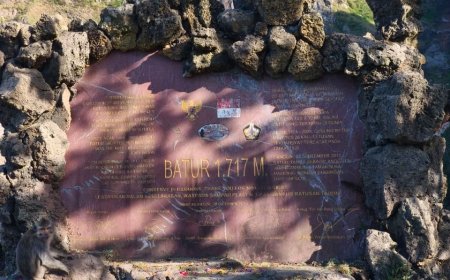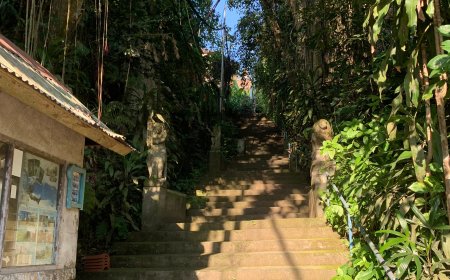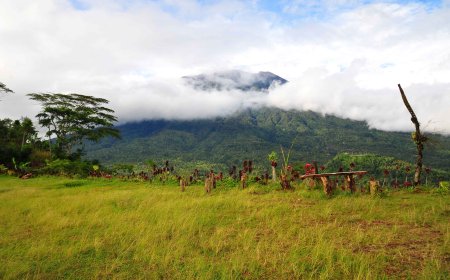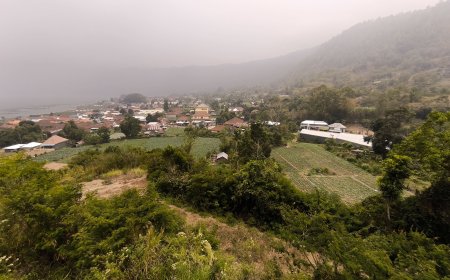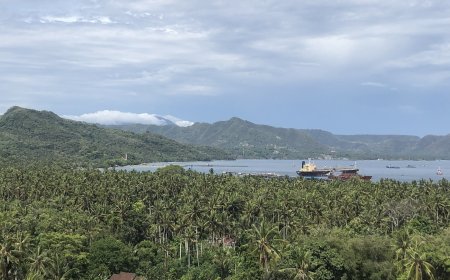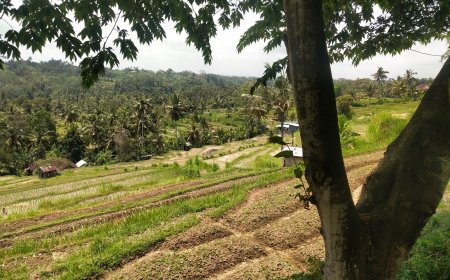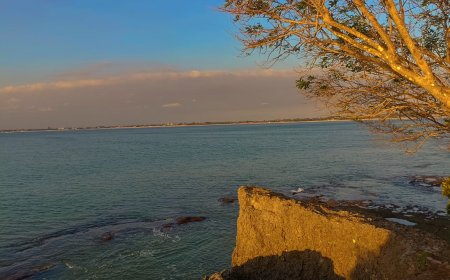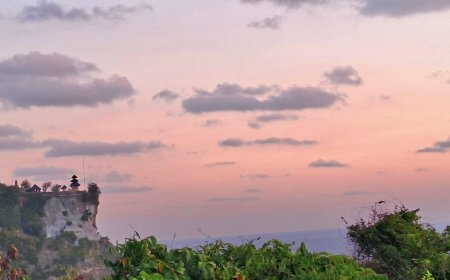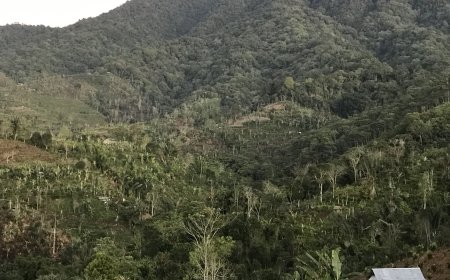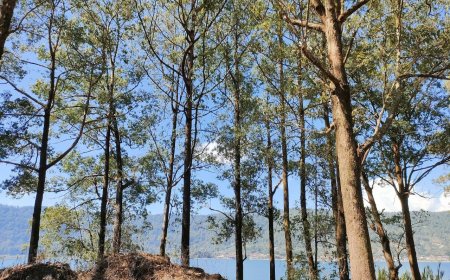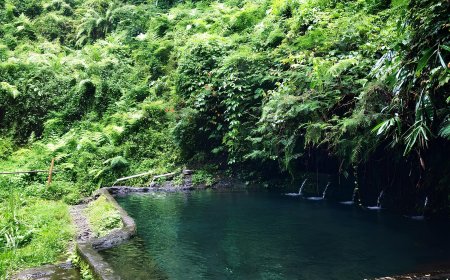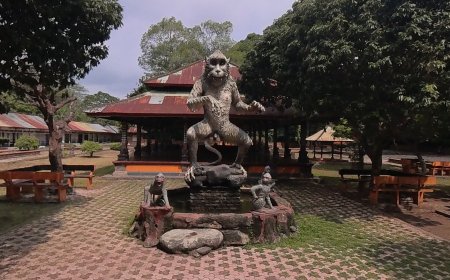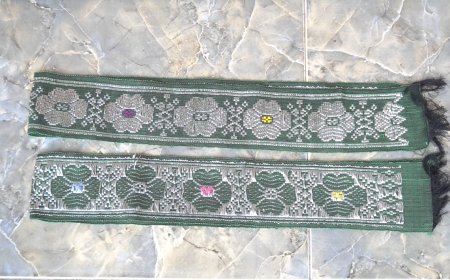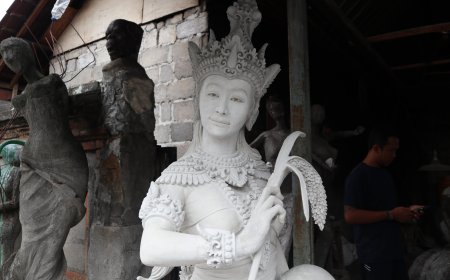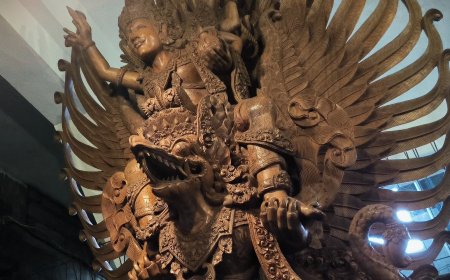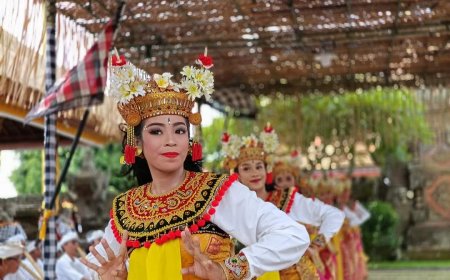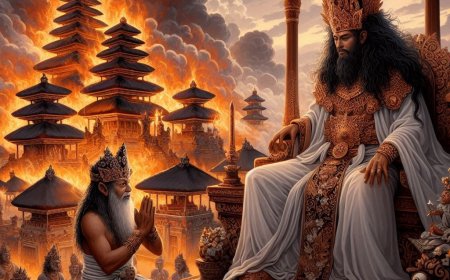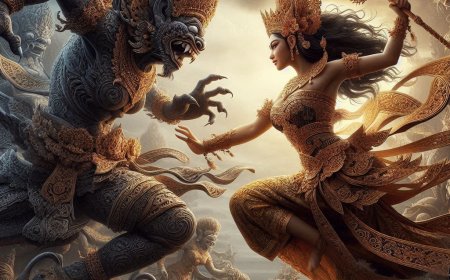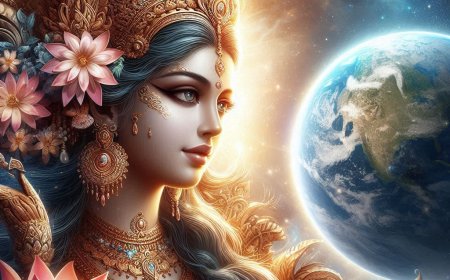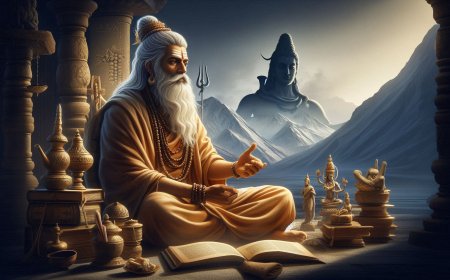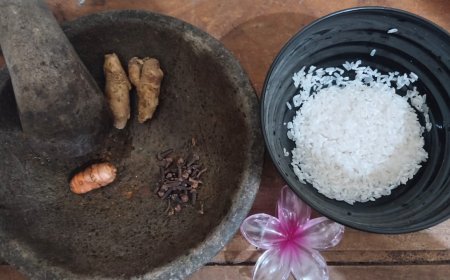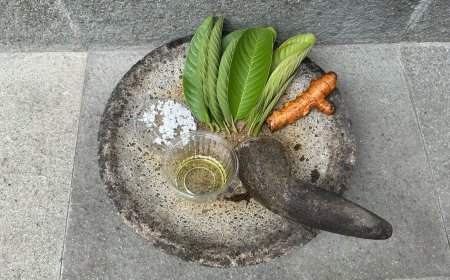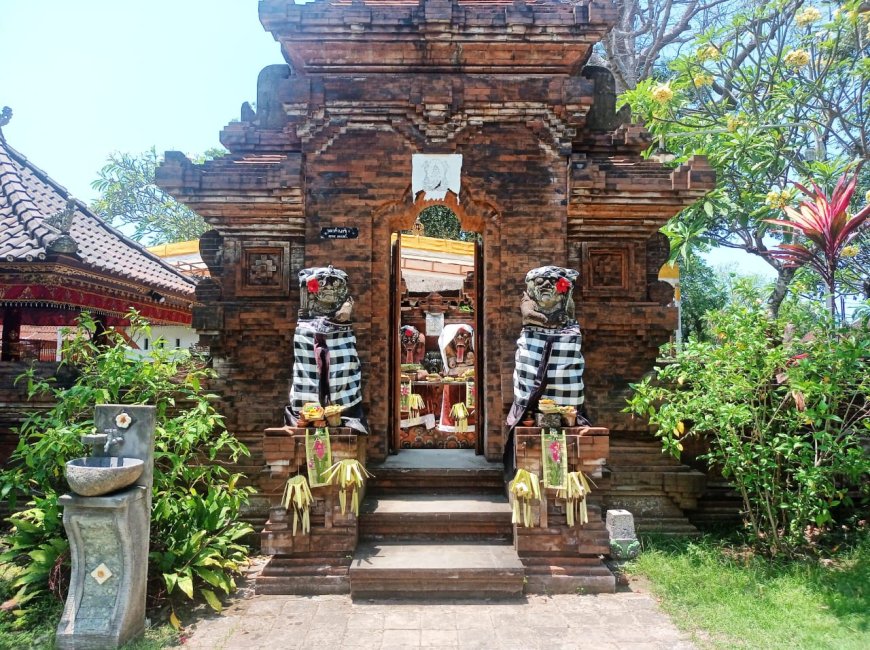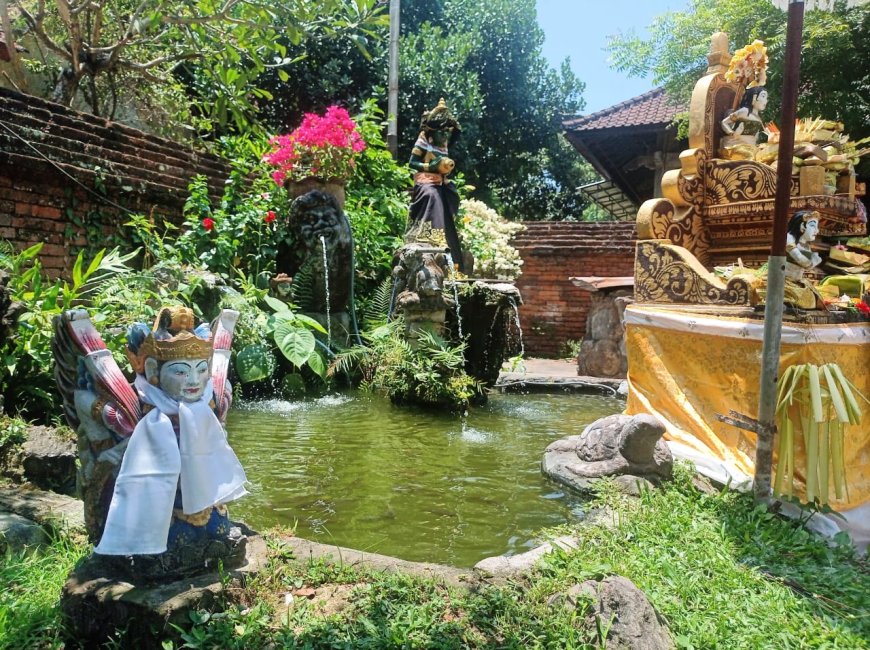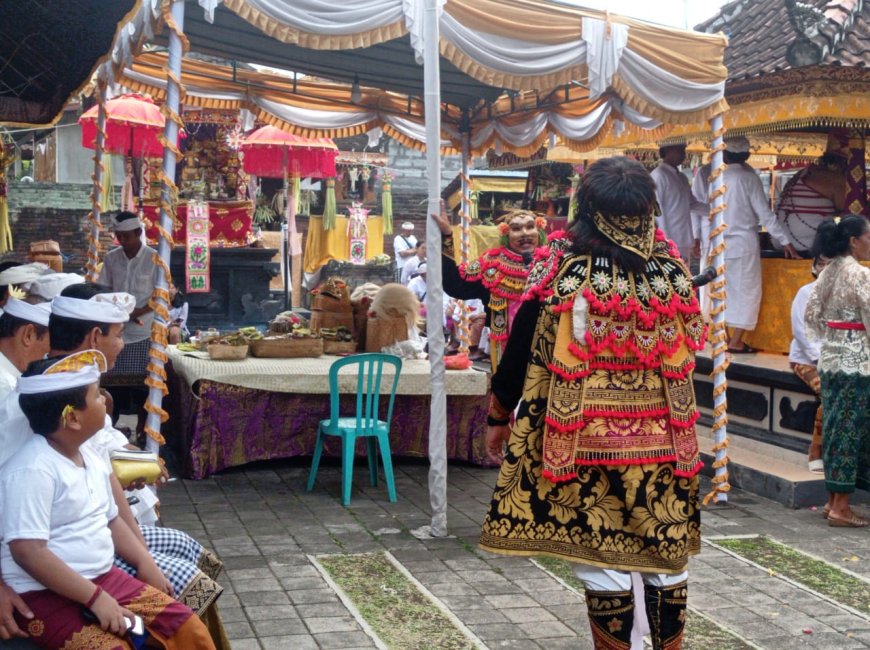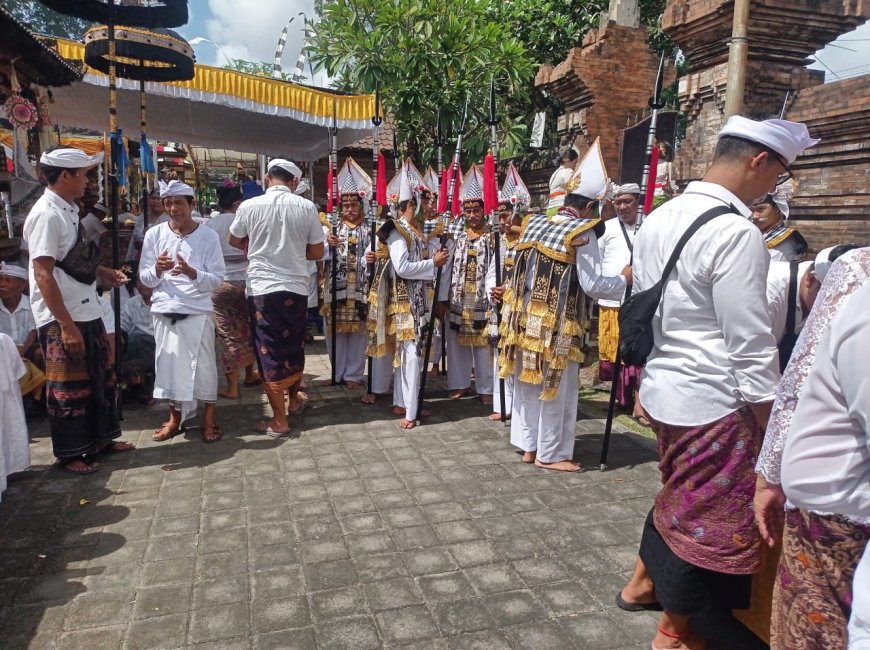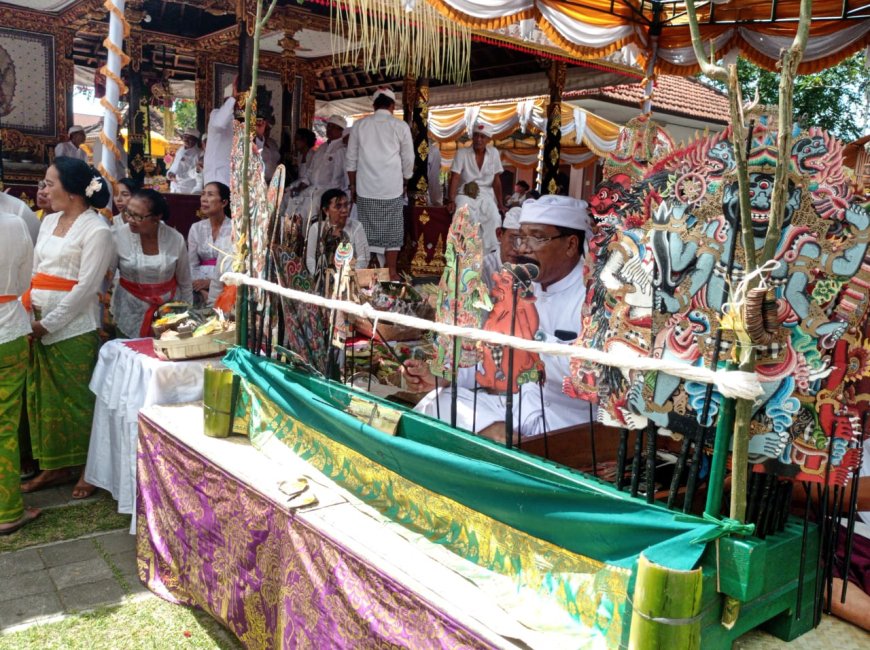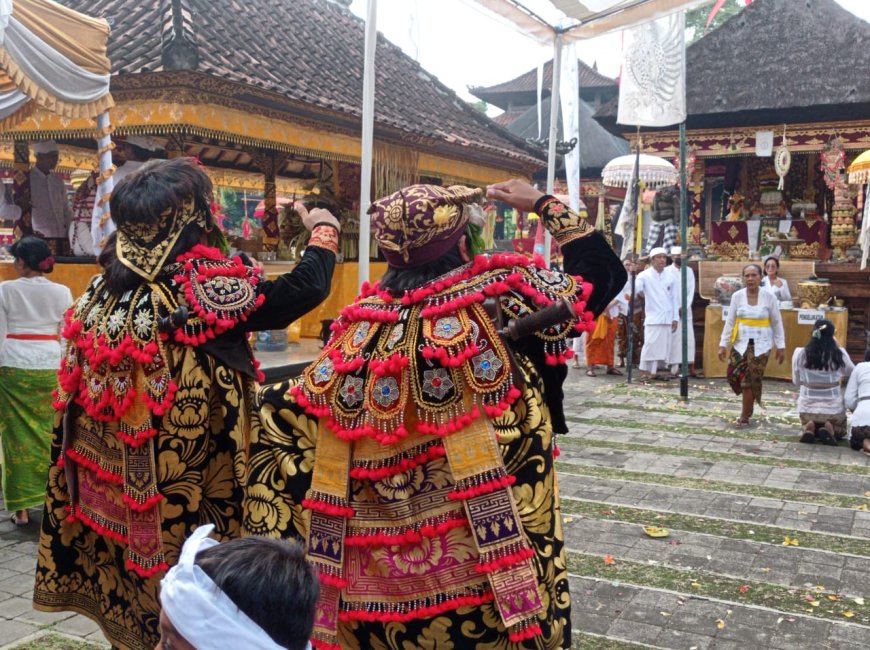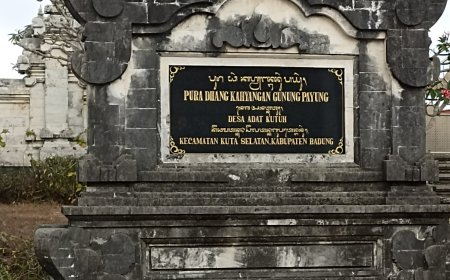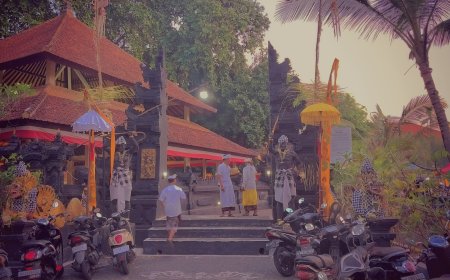Dalem Bungkeneng Temple: 9 Statues in Tri Bhuwana Concept
Dalem Bungkeneng Temple is located in the Tonja Traditional Village, Bali which is famous for its collection of ancient statues, including Dwarapala, mythological animal statues, and animal statues. The temple is a place of worship as well as spiritual protection, with statues placed as guards to ward off negative energy. Each statue has certain characteristics and symbolism, reflecting the culture and spiritual values of the Balinese people.
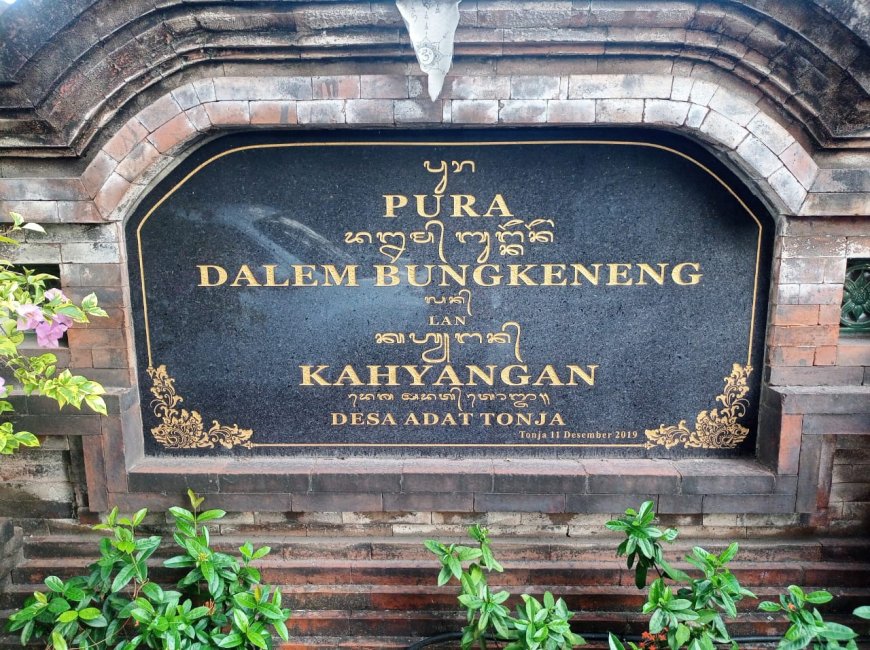
Dalem Bungkeneng Temple (Photo Source: Personal Collection)
Tri Bhuwana is a cosmological view that divides the universe into three parts, namely Bhur Loka (the lower world or the physical realm), Bwah Loka (the middle world or the human realm), and Swah Loka (the upper world or the spiritual realm). This temple was built with a layout and symbolism that shows these three worlds, as well as the creatures or elements that influence each of these realms. Here is an in-depth review of the nine statues in Dalem Bungkeneng Temple in the concept of Tri Bhuwana.
A Brief History of Dalem Bungkeneng Temple
Dalem Bungkeneng Temple is located in the Denpasar area, Bali. This temple is believed to have been established hundreds of years ago and has been a witness to the history of the development of Hinduism in Bali. The name "Dalem Bungkeneng" refers to a place that has mystical and sacred powers, as well as being the center of ancestor spirit worship. Therefore, Dalem Temple usually functions as a place of worship for God Shiva who is the God of Destruction in Hinduism.
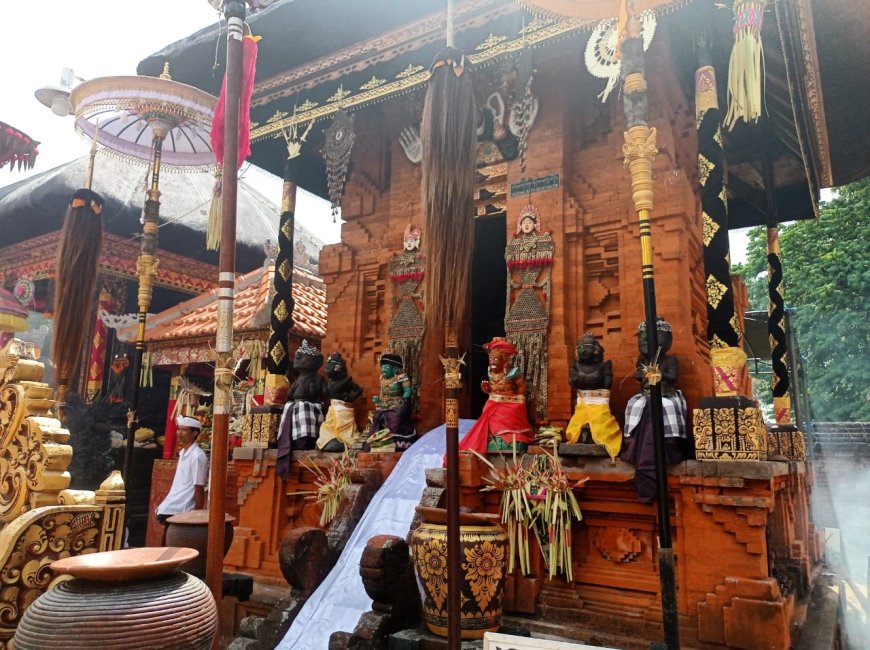
Gedong Ratu Gede Dalem (Photo Source: Personal Collection)
This temple also has a function as a center for death rituals or ngaben, where the Balinese people offer prayers and offerings to deliver the spirits of their ancestors to the afterlife. Apart from being a place of worship, Dalem Bungkeneng Temple also functions as a place of meditation and contemplation for pastors and people who want to get closer to Sang Hyang Widhi Wasa or The One Almighty God.
Dalem Bungkeneng Temple and the Tonja Community
For the people of Tonja, Dalem Bungkeneng Temple has a very important role as a spiritual and ritual center. In Balinese tradition, especially in the Denpasar area, Dalem temples are often a place of worship to God Shiva, especially as a representation of the destruction or controlling aspect of cosmic forces. Thus, Dalem Bungkeneng Temple is a place to hold various death ceremonies, such as ngaben, and also as a place to worship ancestors and ask for protection to avoid various evil spirits and negative energies that may disturb.
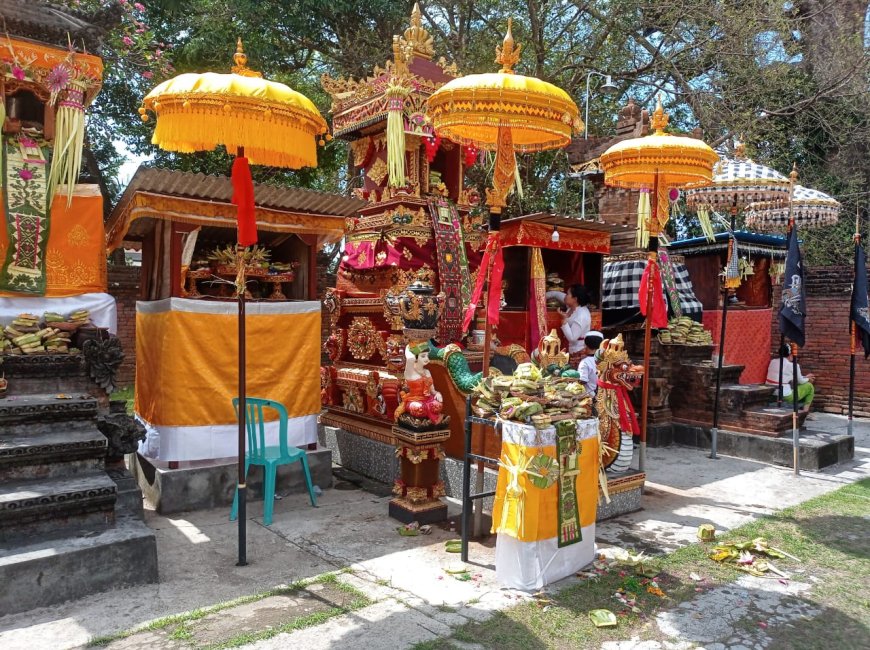
The atmosphere of Odalan at Dalem Bungkeneng Temple (Photo Source: Personal Collection)
Apart from being a place of worship, Dalem Bungkeneng Temple for the people of Tonja is also a place to develop the values of wisdom, courage, and maturity in daily life. This temple is a forum for the younger generation to understand more deeply about Hindu teachings and how these values can be applied in their lives.
The Concept of Tri Bhuwana in Dalem Bungkeneng Temple
Tri Bhuwana is a Hindu cosmological concept that divides the universe into three parts. In Dalem Bungkeneng Temple, these three parts are represented through nine statues that have different roles and symbolism. Here are the three worlds in Tri Bhuwana:
- Bhur Loka: The underworld which is the physical world, the real world inhabited by humans, animals, and other creatures. Here, humans go about their daily lives, struggling to meet their needs and achieve their goals in life.
- Bwah Loka: The middle world which is a transitional world between Bhur Loka and Swah Loka. This world is believed to be a dwelling place for the spirits of ancestors who have died but have not yet attained spiritual liberation or moksha. In this world, the statues in the temple act as an intermediary between the physical and spiritual worlds.
- Swah Loka: The upper world which is the spiritual realm, the abode of the gods and holy beings. Swah Loka is the ultimate destination for spirits who have attained moksha or freedom from the cycle of reincarnation.
Symbol of 9 Statues of Dalem Bungkeneng Temple
Dalem Bungkeneng Temple has nine main statues placed to represent the three layers of nature or Tri Bhuwana. The selection of these nine statues was not done arbitrarily, but was based on a profound meaning related to the cosmological principles in Hindu teachings. Here are some important reasons why Dalem Bungkeneng Temple uses nine statues in the implementation of the Tri Bhuwana concept.
- Cosological representation of Tri Bhuwana
The nine statues in Dalem Bungkeneng Temple represent the three parts of the Tri Bhuwana, namely Bhur Loka, Bwah Loka, and Swah Loka. Each sculpture symbolizes the essential elements of each world. The use of these nine statues shows how every aspect of life is connected and forms a harmonious balance. For the people of Tonja, these nine statues teach the importance of maintaining a balance between physical, spiritual, and relationship with ancestors.
- Symbol of the Process of Life and Death
Dalem Bungkeneng Temple is a place that is closely related to the cycle of life, death, and rebirth in Hinduism, which is called samsara. These statues are not just decorations, but have a sacred function in death ceremonies and the sending of spirits to the afterlife. The nine statues cover important aspects of the human journey through various natures in the Hindu concept, which strengthens the Tonja people's understanding of the importance of spiritual preparation for the next life.
- Teaching the Values of Life through Gods
Each statue symbolizes a certain god or goddess who has special attributes, such as knowledge, courage, patience, and maturity. These values are a guide for the people of Tonja in living their lives.
- Protection and Balance of Natural Energy
The sculptures in Dalem Bungkeneng Temple are believed to be able to maintain energy balance, as well as control natural forces that can have an impact on human life. In Hinduism, the world is not only inhabited by humans, but also by ancestral spirits and other astral beings.
- Philosophical Understanding of Spiritual Balance
These nine statues are a profound symbolization of the spiritual balance one seeks to achieve in life. Tri Bhuwana teaches the people of Tonja that life is not only limited to the physical world, but also needs to include higher spiritual aspects. Through these nine statues, people are invited to understand that a balanced life includes the fulfillment of worldly needs, harmony with nature, and the fulfillment of spiritual needs as a path to moksha or liberation from the cycle of reincarnation.
9 Statues in Dalem Bungkeneng Temple
Dalem Bungkeneng Temple has nine main statues that are placed symbolically to represent the concept of Tri Bhuvana. These statues are not only decorative, but have a deep meaning in Hindu teachings, and serve as focal points in religious rituals and ceremonies.
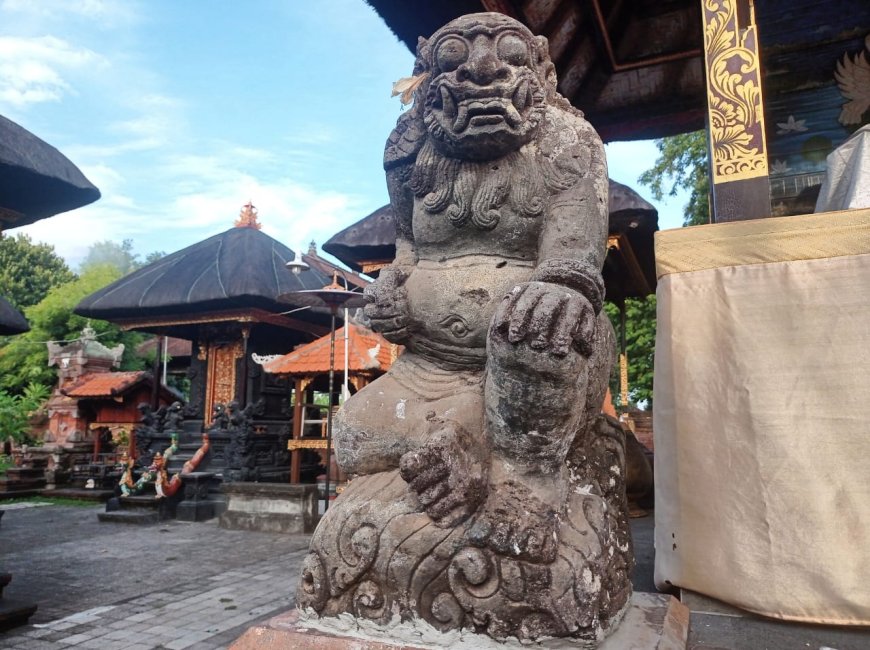
Dwarapala I Statue (Photo Source: Personal Collection)
Dwarapala which comes from the word "Dwara" which means door and "Pala" which means guard. So the meaning of Dwarapala is the guard of the entrance. The statue sits without a backrest with its legs bent, its face round and strongly accented, like bulging eyes and fanged lips. Wear simple accessories and the right hand holds the knee, while the left hand is on the stomach.
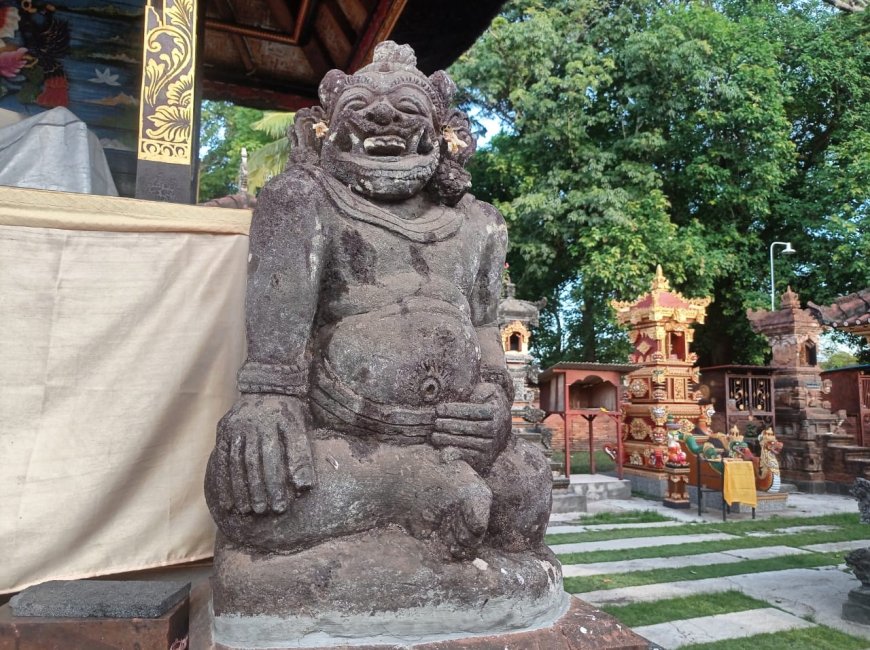
Dwarapala II Statue (Photo Source: Personal Collection)
The statue sits with one leg bent upwards, a round face with fangs and hair on the sides of the head. The right hand is bent with a fist, and the left hand is holding the knee. Wearing simple patterned fabrics.
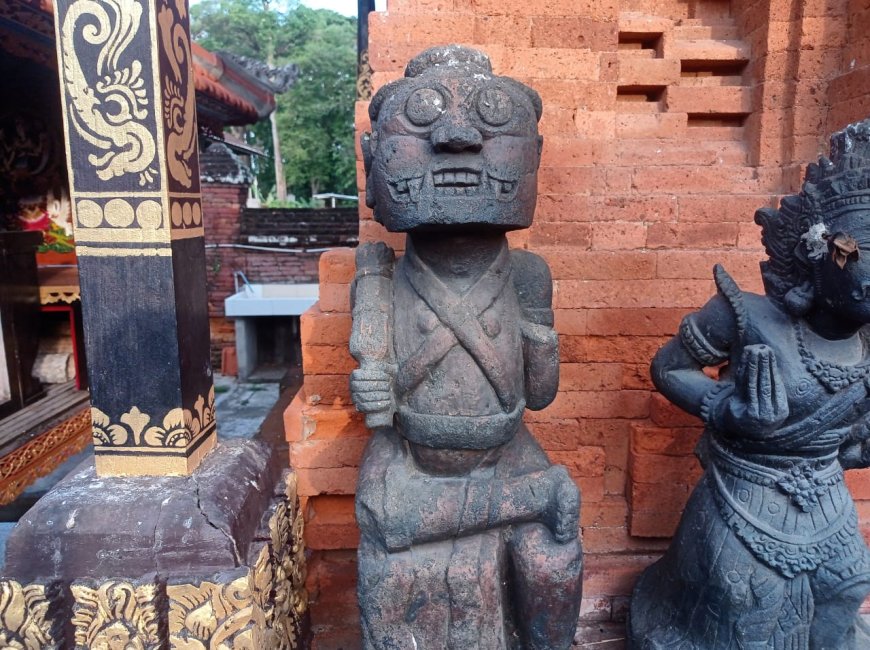
Dwarapala III Statue with Megalithic Pattern (Photo Source: Personal Collection)
Sitting without a backrest, the right leg folded over the left thigh. A square face with characteristic fangs and large ears with leaf accessories. His right hand was broken, and his left hand was clenched in his chest.
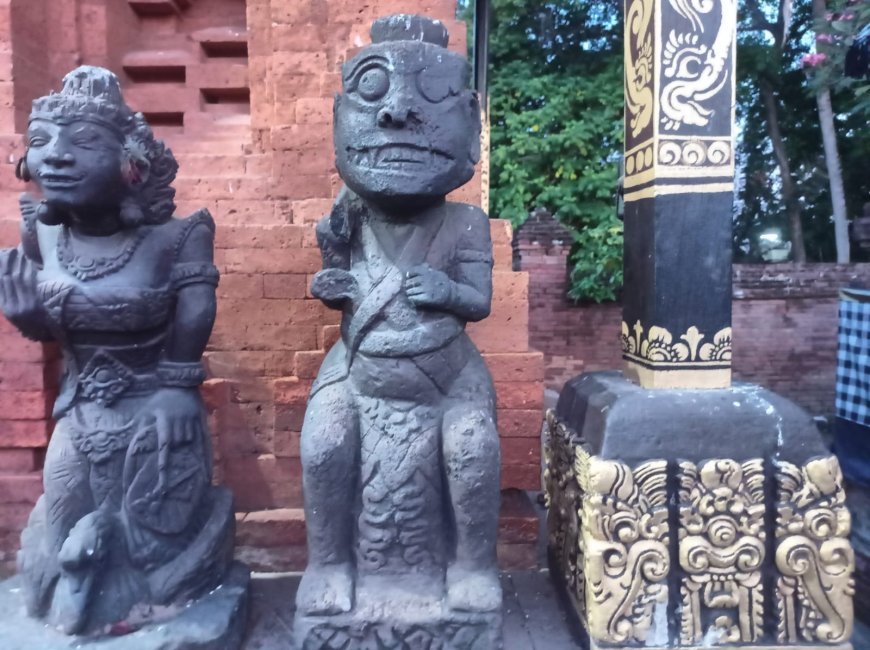
Dwarapala IV Statue with Megalithic Pattern (Photo Source: Personal Collection)
Sitting on a carved mat, the right leg on the left thigh, the right hand carrying a mace, and the left hand is broken. This sculpture also has leaf motifs and geometric patterns.
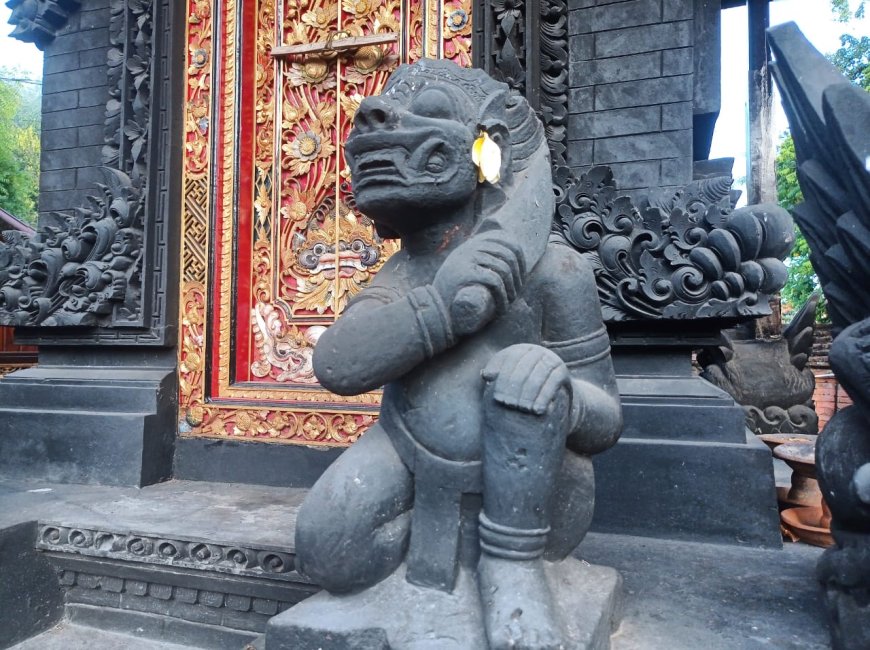
Dwarapala V Statue (Photo Source: Personal Collection)
The statue is prostrate, eyes bulging and fangs, wearing jamang on the head. The crossed right hand carries the weapon, the left hand is on the knee. Wearing a wristband and feet with a simple motif.
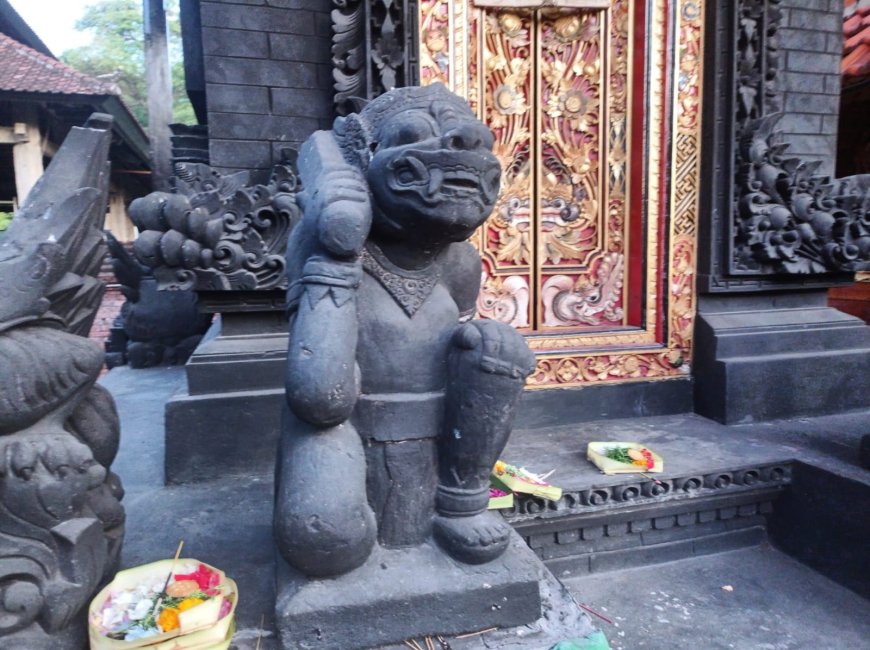
Dwarapala VI Statue (Photo Source: Personal Collection)
This statue depicts a giant face creature, sitting on one knee. Large hands show the character of strength and protection. This kind of statue is often placed at the entrance of the temple to guard the sanctuary from evil spirits.

Tiger Statue (Photo Source: Personal Collection)
The statue is in the shape of a resting tiger with its front and hind legs bent, its mouth open revealing its fangs, symbolizing a vigilant guard.

Statue with Goose Rides (Photo Source: Personal Collection)
This sculpture is a statue with a goose ride. The goose ride is a symbol of wisdom and purity, and is often associated with Goddess Saraswati in Hindu beliefs. The statue shows a figure standing in intricate traditional clothing, signifying his spiritual and sacred status. The goose as a ride shows majesty and subtlety, reflecting that this statue has a special meaning, tending to be a representation of protector or protector connected with wisdom.
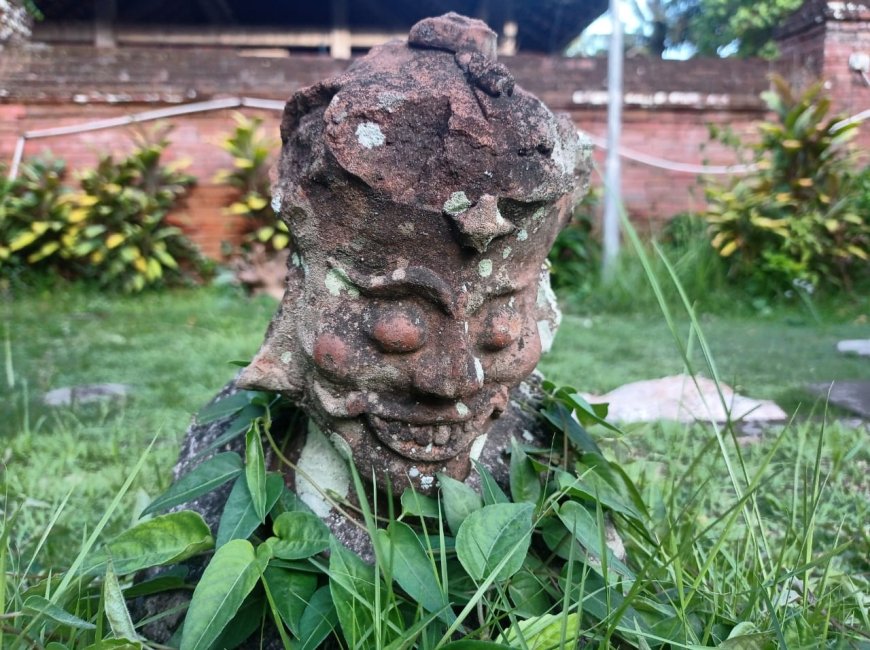
Part of the Terracotta Sculpture (Photo Source: Personal Collection)
The head of the terracotta statue features a square face with thick eyebrows, round eyes, a pointed nose, and open lips exposing teeth. Her hair is tied in the middle of her head with a star decoration on her forehead, giving it an authoritative impression. These fragments are tied to andesite stones and placed in the garden, adding to the impression that the statue has adapted to its environment.
Philosophical Meaning and Ritual at Dalem Bungkeneng Temple
Dalem Bungkeneng Temple is an important place for the Balinese people to learn and understand the concept of Tri Bhuwana more deeply. With these nine statues, people are invited to reflect on the meaning of life, as well as connect themselves with the physical realm, the transition realm, and the spiritual realm. Each statue has values that can be applied in daily life, from wisdom, courage, to balance and spiritual achievement.
Rituals at Dalem Bungkeneng Temple usually include offerings, prayers, and meditation. The offerings made in each part of the temple refer to the philosophy of Tri Bhuwana, where the Balinese people try to maintain a balance between their world and the spiritual realm.
